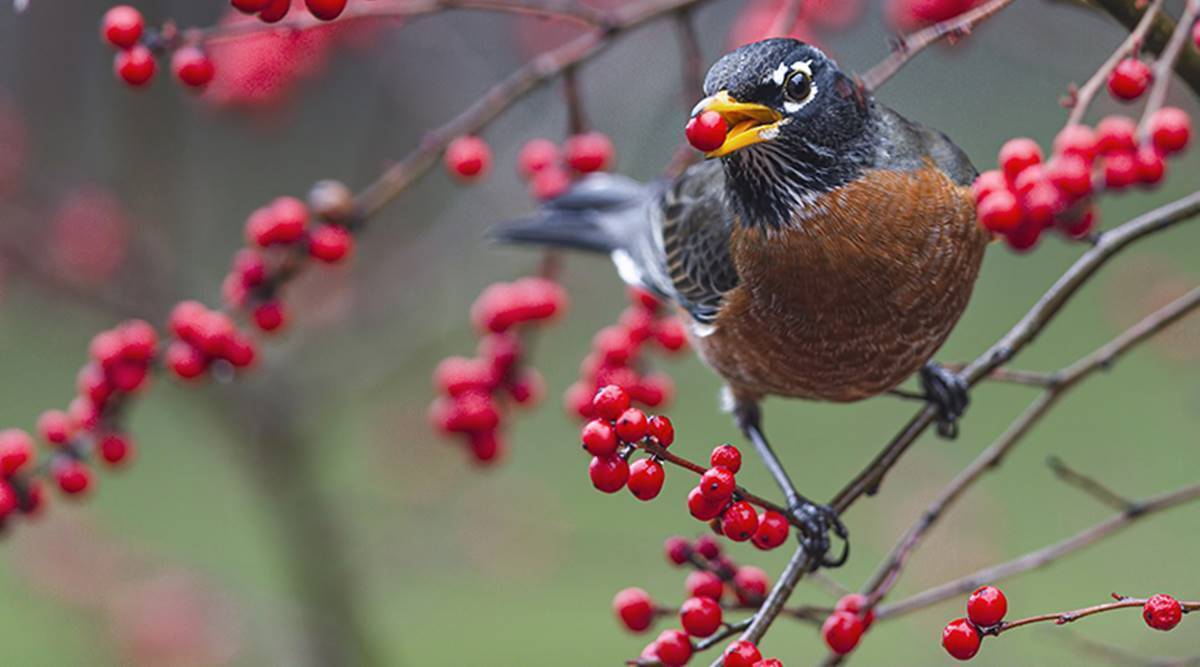Some African Birds Follow Nomadic Ants to Their Next Meal

To better understand Equatorial Guinea’s tropical birds, ornithologists Luke L. Powell and Patricia Rodrigues scan the ground rather than the trees. They are searching for nests of driver ants (Dorylus spp.), the Science News reported.
These voracious predators will march out of their underground nests and fan out into a meters-wide swarm, flushing out insects and worms from undergrowth. From the trees, birds swoop down to catch the fleeing insects. And where the ant swarms go, the birds follow.
Swarms make humming and “tick tick tick” sounds, says Powell, of the University of Porto in Portugal. It is the sound of the ants — and of animals scurrying in panic (SN: 8/12/02). “Then you hear the sounds of birds chirping at the edge [of the swarm], communicating.”
Ant-following birds are well studied in the neotropical Americas. In Africa, however, “people have seen birds follow ants, but nobody has really looked” to see whether the animals have a specialized relationship, says Rodrigues from Louisiana State University in Baton Rouge.
The first step to figuring that out is finding driver ant nests. Since 2020, Rodrigues has spent weeks at a time scrutinizing the ground for ants in a forest near Ciudad de la Paz. When she finds them, she knows to keep her distance. “They’re super-duper aggressive and they have giant mandibles that can pierce your skin,” Rodrigues says. Despite her caution, ant bites “inevitably happen”— sometimes the ants fall out of trees onto her and her colleagues.
Rodrigues follows the ants as they carry food back to their nests. Since driver ants are nomadic, often relocating their colonies, she checks every nest daily in case the colony starts to move. “We do a lot of walking around the block,” she says with a laugh.
For their latest study, Rodrigues, Powell and colleagues placed cameras at the entrances of seven driver ant nests and recorded about 80 hours of footage. “Birds come up to a nest entrance and check it out,” says Powell, leaning his body forward and turning his head left and right, imitating a bird, “and fly into the direction of where the ants are raiding that day.”
When the team played calls of ant-following birds like the white-tailed ant thrush (Neocossyphus poensis) and fire-crested alethe (Alethe castanea), it attracted about 30 other bird species. Many of these birds eat insects and could be homing in on the calls of specialized ant-following birds for food, the researchers say. In contrast, only seven bird species responded to calls of the African green pigeon (Treron calvus), which does not follow ants.
What’s more, early results from a GPS monitoring experiment suggest that ant-following birds have larger home ranges than the average understory bird. The scientists think this is because the birds have to fly farther to survey the moving ant colonies, Powell said July 6 at a meeting of the Association for Tropical Biology and Conservation.
These newly documented behaviors in African tropical birds show they are more specialized on driver ants than researchers had expected, Rodrigues says. The team now wants to examine how this specialization affects the birds when forest degradation changes the numbers and distribution of driver ants.
Previous studies in Cameroon and Equatorial Guinea have shown that forest degradation drastically reduces the populations of insectivorous birds, especially the ones that follow ants. Because driver ants avoid hot, open spaces, Powell and Rodrigues wonder if that might explain why these birds are particularly vulnerable to forest loss.
The team’s work “is essential to inform decision makers and ideally have an impact on regulations for deforestation and land-use change in countries with growing agriculture, such as Equatorial Guinea,” says Carolina Ocampo-Ariza, an ecologist at the University of Göttingen in Germany who has reported on the impact of forest loss on ant-following birds in Cameroon. Forest degradation would remove the mix of trees and shrubs that the birds need to “stand on and effectively catch prey and follow the ants,” she says.
Because ant-following birds are relatively easy to find, not hunted, and sensitive to forest disturbance, Powell says they could indicate which forests to protect and how. Studying the birds and their relationship with driver ants is akin to “keeping your finger on the pulse of forest health,” he says.
4155/v
























